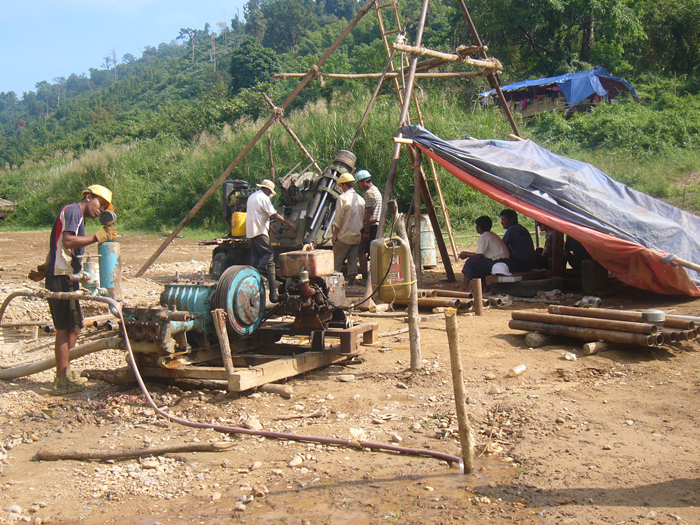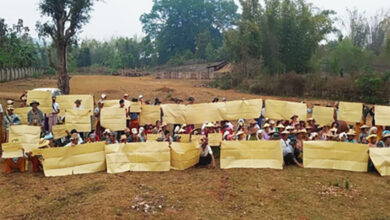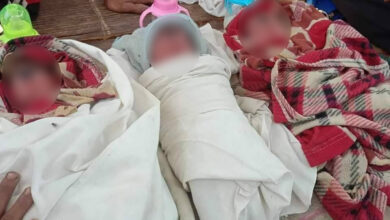Villagers claim dam will ruin lives

Karen News reporters investigate persistent rumours that a dam site is being prepared for construction in Southern Burma. The site, on the Tenasserim River, is causing concern among villagers in the area who claim that a Thai company has been surveying the area and plans to build a hydro-power dam on the river that means villagers will be evicted and their farms destroyed.
The Tenasserim River is a major river of southeastern Burma. It flows through the Tennasserim region that borders Thailand on the east and the Andaman Sea on the west. The area is remote and is difficult for environmentalists or international journalists to get access to verify stories. Conflict between the Karen National Union (KNU) and the Burmese military government in the Tenasserim River valley also adds to the difficulties.
Karen News reporters went to the dam site to investigate and talk to local people about their concerns.
Farmer Saw Mo Hsa explained that for generations of Karen villagers’ agriculture had been their main source of living.
“Villagers have always earned their living by farming rice and cultivating plantations. The river is vital to our way of life.”
Naw Lay Shwe agreed.
“The Tenasserim River is our lifeline, it is our transportation and supplies our needs. We depend on the forest, river water and land.”
Villager Naw Sa Sa Aye said.
“We can fish and it is a convenient way to travel. Even when the water is low, we can find resources there to make our income.”
The Italian-Thai Development Company and Windfall Energy Services of Singapore signed a memorandum of understanding with the Burmese military government on October 9, 2008 to build the 600-megawatt Tenasserim hydroelectric project on the Tenasserim River.
Saw Aye Toe, a community leader said The Italian-Thai Company first came in October 2009 to survey a site for the dam.
From the end of 2008 until May 2011 Italian-Thai surveyors and Burmese soldiers carried out a series of surveys on the Tenasserim River. The area is under the administration of the Karen National Union’s Mergui-Tavoy District office.
Saw Lay Kwe said he told the company engineers the community did not want development that would ruin their way of life.
“I told the head engineer, I told him we don’t accept your coming to do this. We don’t need this, but he said you must accept this. He repeated many times you cannot oppose this. I was afraid to argue on my own.”
Saw Lay Kwe said the engineers took their equipment and went to Pa Yo Kwee where they measured the water level before returning to Ler Pa Doh village.
Villagers say two potential dam sites are marked on the river – an upper dam site near the villages of Ler Pa Doh and a lower dam site near Mo Ro.
The villagers’ claim the Italian-Thai company did not consulted with them about the dam proposal. They allege the company did not initially talk to the KNU, but only approached them when earlier surveys were stopped by the KNU – the KNU’s Mergui-Tavoy District has given permission for the survey.
The Italian-Thai Company was awarded the contract for the mega Tavoy Development Project that according to the MoU is intended to develop the region as a trading hub for in Tavoy. The MoU states that development of a new port, industrial estate, road and railway links with Thailand, petrochemical complex, an oil refinery, steel mill, oil pipelines and a hydo-power project.
The has been no official announcement that the energy produced by the proposed Tenasserim River hydro-power will be exported. Some analysts claim the Tenasserim hydro-electric dam could possibly be a supply for the proposed Tavoy industry zone.
Meanwhile, Saw Aye Toe says local villagers are worried they will be forcibly relocated.
“If the dam is built in our area, it will destroy 12 villages, plus another six downstream of the dam site.”
Naw Lay Swe said.
“The dam will not benefit our villages, it will bring us into slavery. We will lose our farms and have to work as day laborers to survive. It will only benefit the Burmese government and rich investors.”
Naw Sa Sa Aye worries even if there is available electricity villagers will have to pay.
“The dam won’t benefit our village. They say they will give us 24-hour electricity. It won’t be free. In Thailand they charge for electricity. They will do the same to us. We are poor, we can’t pay.”
Saw Mo Hsa said he is worried about being relocated.
“If the dam is built it will create many problems. Our worry is how we will survive in the future. We worry about where we will be moved to? The Tenasserim River was inherited from our forefathers.”
Saw Mo Has says he has a message for the companies involved in the proposed dam.
“Tell the head of the company to think about our villagers and to stop the dam.”
There are at least 51 planned hydroelectric dams in Burma.
According to a media statement by the Burma Rivers Network in June, mega dams are fuelling conflict in Burma. The Burma Rivers Network also say mega dams in Burma have severe negative social, environmental, and economic impacts, while the majority of electricity generated is exported to neighboring countries or is used by the military. Most of the dams are located in ethnic states and allow the expansion of Burmese army to control these areas.




